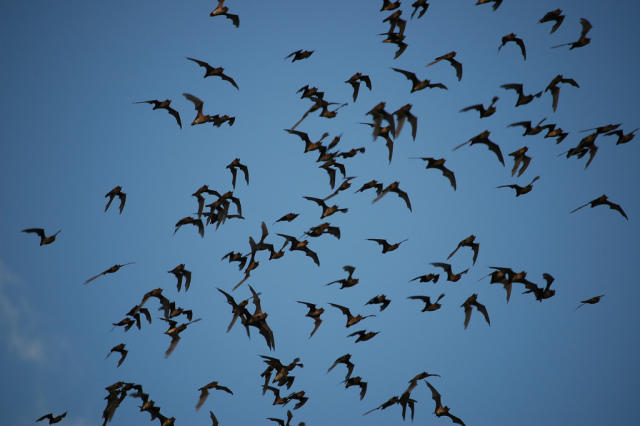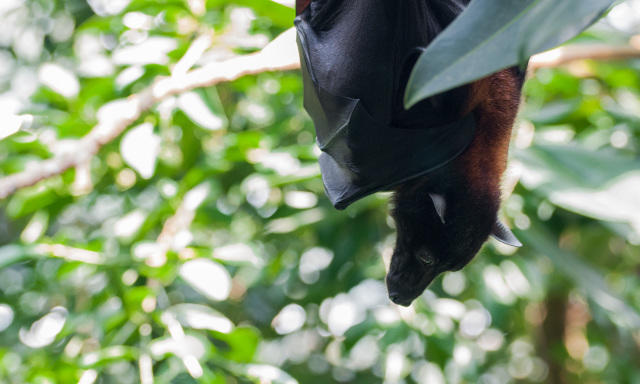Researchers are hunting for viruses that could cause the next pandemic
Posted on July 13, 2017 by Anand Jagatia
Scientists around the world are looking for the next SARS or MERS virus in wildlife from disease emergence ‘hotspots’.

In late 2002, a new kind of lung infection began to emerge in the Guandong province of southern China. Patients came down with a fever, headaches and muscle pains, before developing a cough and difficulty breathing. As the disease began to spread further afield, images of people in surgical facemasks became a common sight on the news, and soon SARS (severe acute respiratory syndrome) developed into the first global pandemic of the 21st century. In total, the outbreak infected more than 8,000 people in 27 countries, leaving over 700 dead.
By July 2003, human-to-human transmission chains of SARS had been successfully broken, and the WHO announced that the pandemic was over. But scientists still didn’t know where the virus had come from. Initial theories focused on infected animals sold in Guandong’s markets. SARS was detected in ferret-badgers, raccoon dogs and mongoose-like creatures known as civets, which were slaughtered in their thousands when SARS returned to the country in 2004.
Large numbers of civets are farmed for food in China (they are used to make a delicacy called “dragon tiger phoenix soup”), but further research cast doubt on the idea that they were the original source of the disease. Although civets from animal markets tested positive for SARS, both farmed and wild populations of these animals were largely virus-free. This ruled them out as the natural reservoir for the virus, and implied that the overcrowded mixing of animals in the markets could have led to civets becoming infected by another, unknown host.
Researchers began searching local wildlife species for related pathogens that belonged to the same family as SARS – the coronaviruses. Primates, rodents and bats all seemed like possible suspects, and then, in 2005, two teams independently discovered SARS-like viruses in Chinese horseshoe bats. Their suspicions weren’t confirmed until 10 years after the initial outbreak, when a live coronavirus 99.9% similar to SARS was found inside a bat, confirming these flying mammals as the most likely origin of the deadly disease.
Bat Catching
Bats appear to be a particularly important reservoir for coronaviruses. In 2012, they were also the likely source of MERS (Middle Eastern respiratory syndrome), which killed 640 people. Here, bats seem to have passed the virus onto camels, which, like civets, became the source of human infections.
But there are also huge numbers of unknown coronaviruses circulating in bats and other wildlife around the world. We know very little about these ‘pre-emergent’ threats and the risk they might pose, especially in resource-poor countries. This is a problem, because many of these are places where wildlife and humans regularly come into close contact, and as such are predicted to be hotspots for disease emergence.
So what’s the solution? To wade out into the wilderness and start plucking bats out of the sky to test them for coronaviruses?
Well actually, yes.
“There are different ways to catch a bat depending on the species you’re trying to capture,” says Simon Anthony, a virologist at Columbia University. “But a common way is to use mist nets. These essentially look like volleyball nets, but the netting is really very thin so the bats don’t see it, certainly not at dusk.”
Simon is co-lead for Pathogen Detection for the USAID PREDICT project, an ambitious programme that aims to find and catalogue the viruses across the globe that could cause pandemics in humans. The programme is interested in many viruses and many hosts, but has just published a paper focused on coronaviruses and bats. The work has seen hundreds of people sampling over 12,000 bats (as well as more than 3,000 rodents and 3,000 primates) from 20 ‘hotspot countries’ in Central Africa, Latin America and Asia.

These are big numbers. A sampling effort on such a huge scale has never been attempted before, but it’s even more impressive when you consider that the majority of countries involved lacked the infrastructure to carry out such tests before the project began.
“Many did not have the capacity to do this type of sampling and testing,” says Simon. “At the beginning of the project in 2009, we spent a lot of time working with our in-country partners to develop that capacity. We trained wildlife biologists to catch and identify bats or rodents, sample animals safely, and labs to test the samples for viruses.”
This is a big part of what the PREDICT project is about: building local capacity so that viral discovery can be done in-country. Training local scientists and technicians also means that the project can tap into local expertise.
“We have teams on the ground that have local knowledge,” explains Tracey Goldstein from UC Davis, co-lead for Pathogen Detection for PREDICT. “They know where in the country are the important places to work – where the contact is between animals and people, and the types of contact that’s occurring.”
Know Thy Enemy
So, after five years of sampling and collecting thousands of specimens, what did the team learn? Well, it turns out there are a lot of coronaviruses out there; the study detected over 100 distinct kinds, and nearly all of these were found in bats. The study therefore cements bats as the major reservoir of coronaviruses worldwide, but it also provides a much clearer picture about where these viruses live and what they’re doing.
“It’s like that old saying – know thy enemy, right?” says Simon. “We now know where they are, and we can follow up on them and work out which ones are potentially dangerous to humans. That’s really an important aspect of this.”
To that end, one of the viruses that the team found in a bat is closely related to MERS, and the obvious question is – can it infect humans? In another recent paper, the group sequenced the virus’s full genome and tested whether it could enter human cells to see if it posed a threat. Interestingly, the team found that this doesn’t seem likely, even though it was so similar to a known human pathogen – an important reminder that not all viruses circulating in wildlife are harmful to people.
But, even if a virus can infect human cells in the lab, that doesn’t mean it will. Other factors come into play, like the biology and ecology of the reservoir host, and how people interact with them.
“If we learn that certain activities are bringing people into contact with bats for example, or there are certain seasons when bats are shedding a virus, or certain species associated with a disease, then hopefully that also gives us the opportunity to change people’s behaviour,” says Tracey.
“That’s honestly the way we are going to protect people from future outbreaks. So for example, not feeding or handling bats both conserves the species and protects human health.”
In all of this, it’s easy to see bats as the bad guys. As well as being a reservoir for coronaviruses, they’re also hosts for rabies, Ebola and Nipah virus. But culling them would be a very bad idea – both for them and for us.
“Bats perform very important roles in ecosystems, such as insectivorous bats that manage mosquito populations and fruit bats that act as pollinators,” says Tracey.
“And there would be so many unintended outcomes of culling bats that would probably be terrible for human health, which we couldn’t even predict, like an increase in bats shedding the virus. So we absolutely don’t suggest that.”
Now that much of the groundwork has been laid, PREDICT has access to a coordinated network of scientists around the world. The programme will continue sampling bats and other hosts for viruses that could spread to humans in an effort to get ahead of the curve – and, potentially, stop the next pandemic before it emerges.
